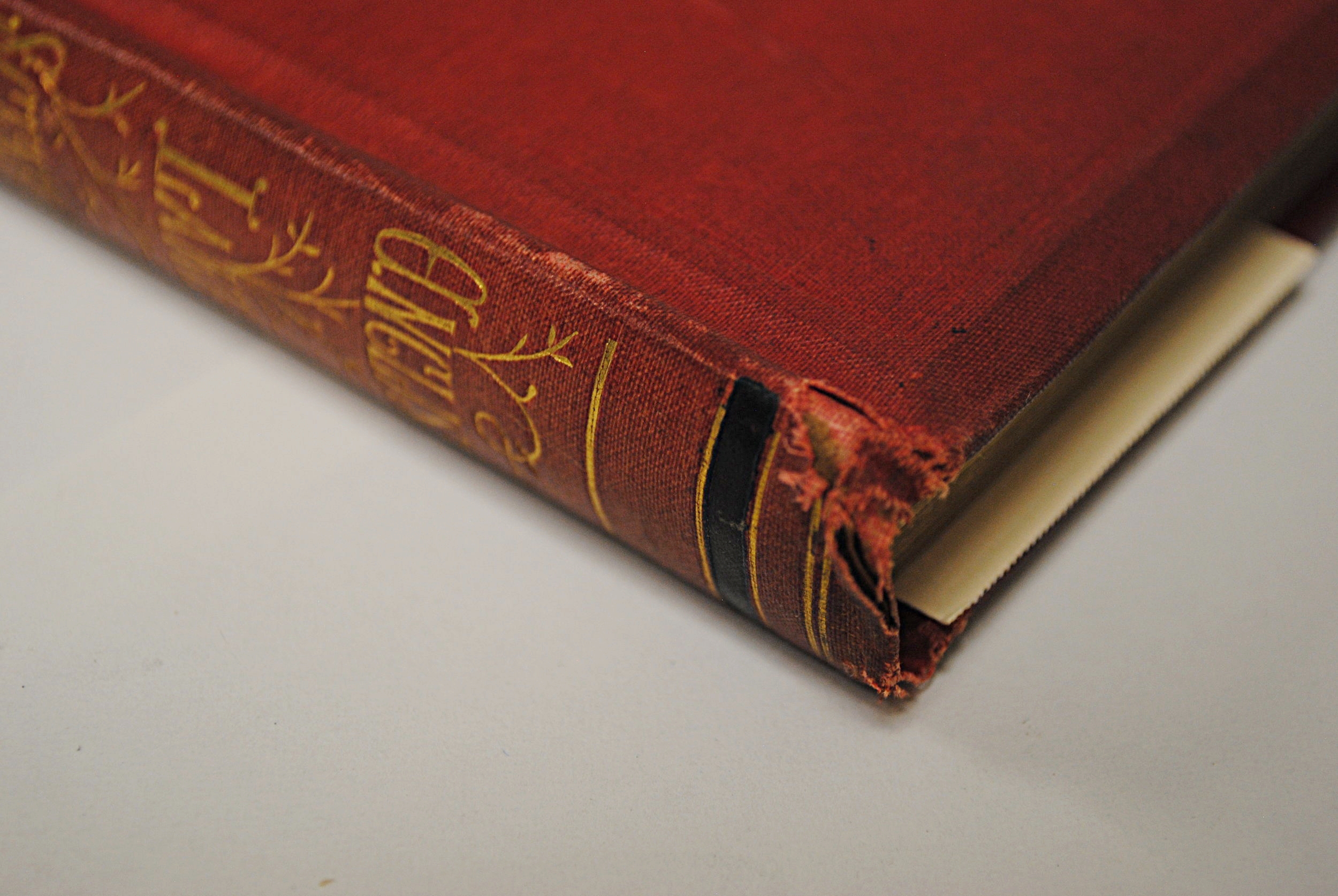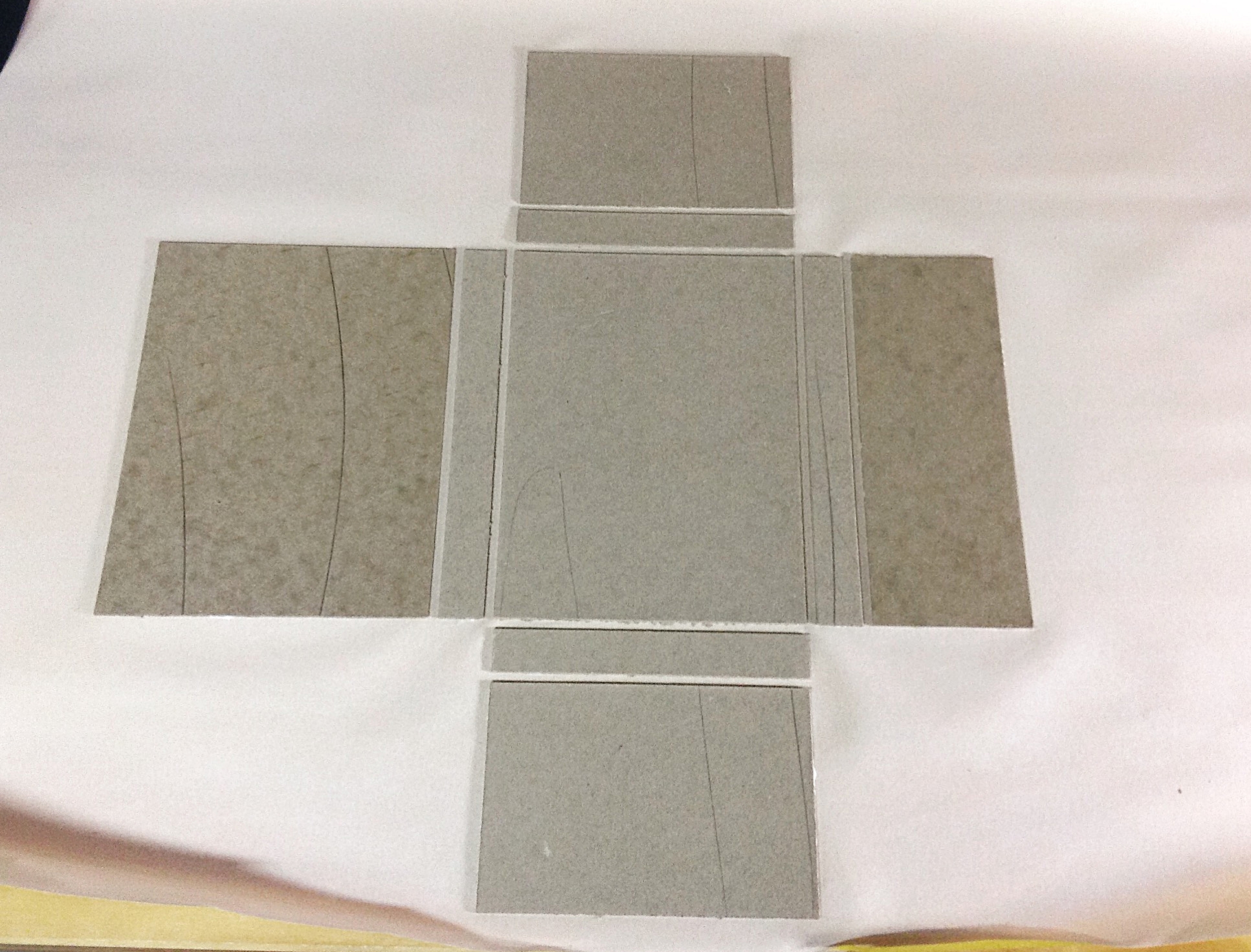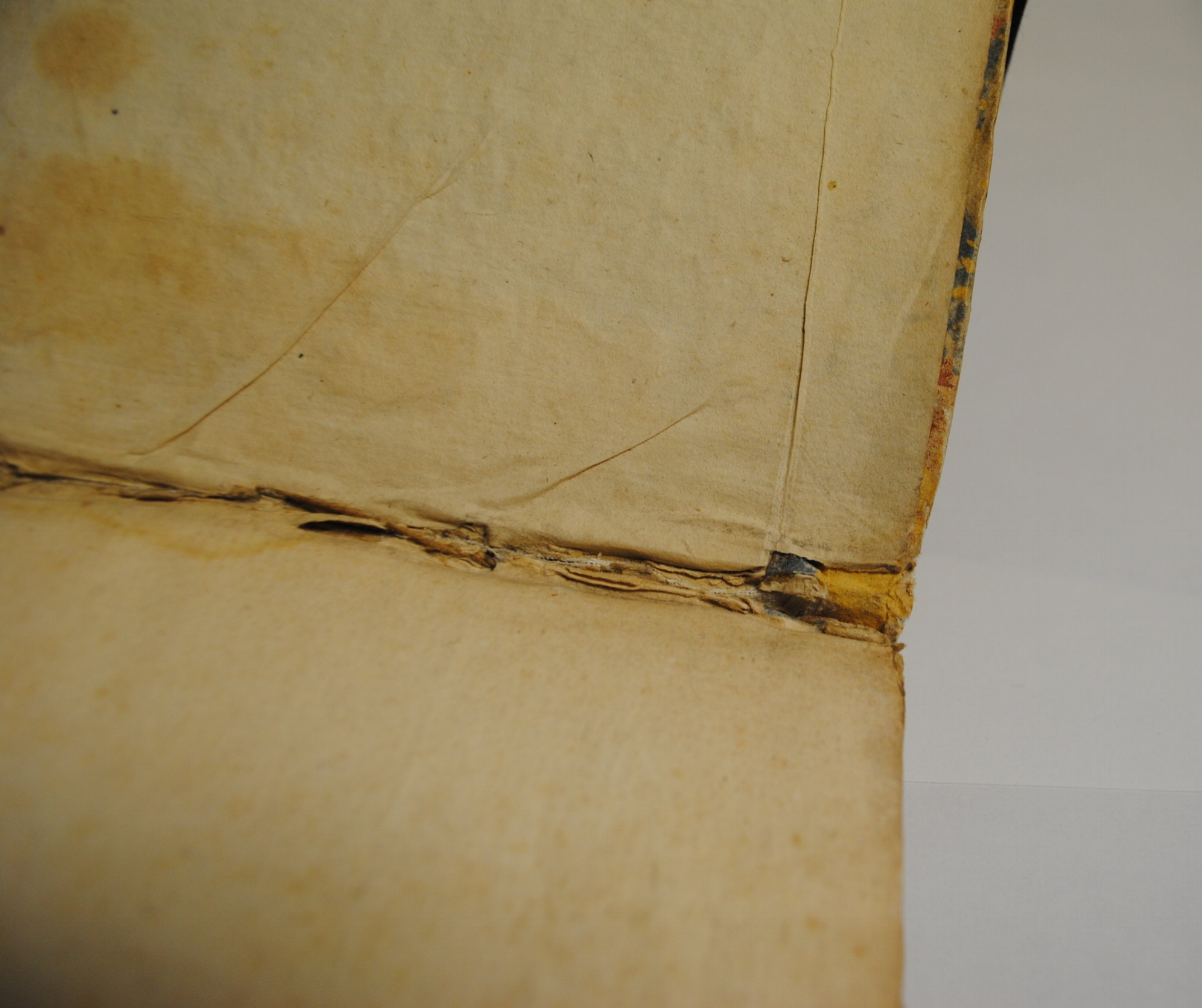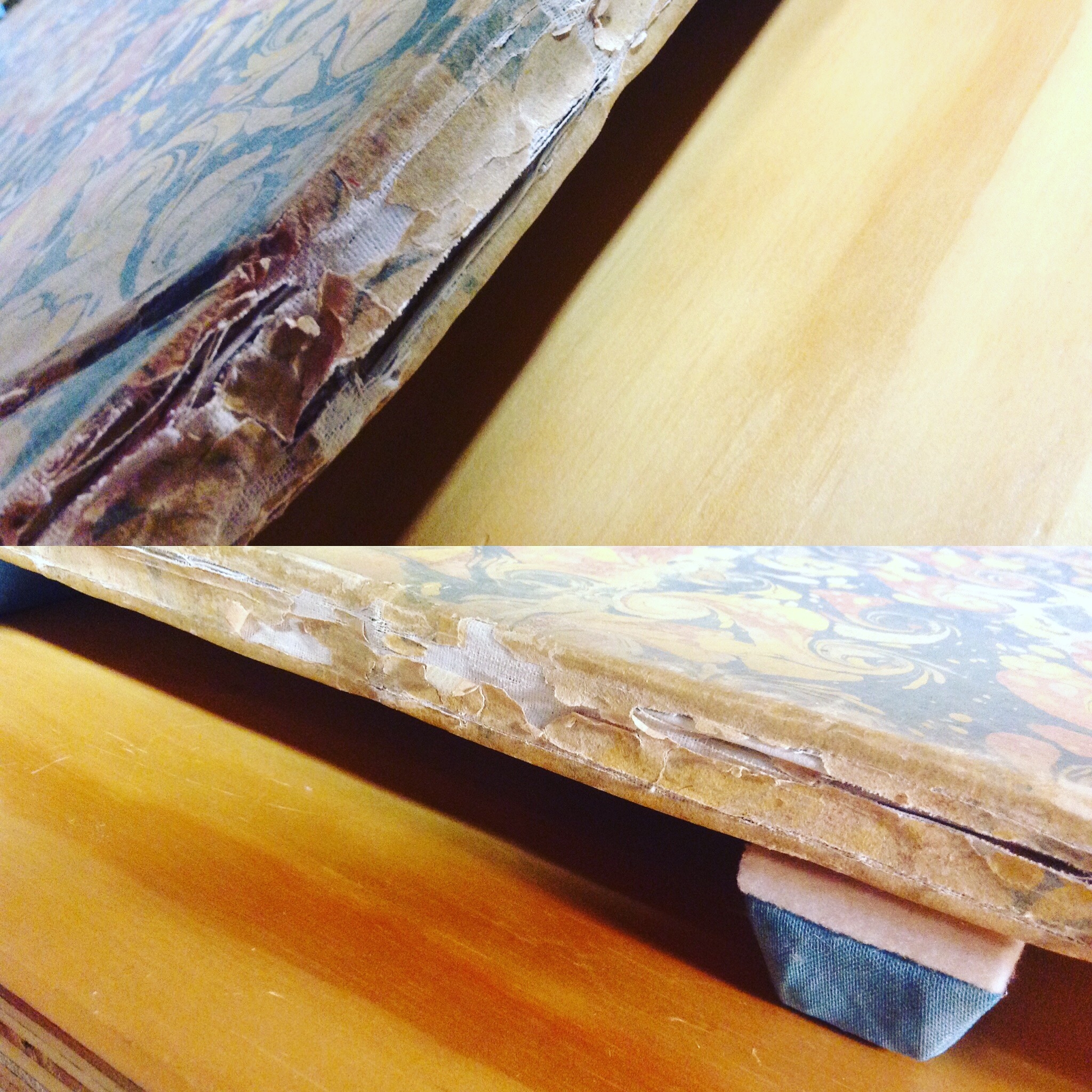While in my last post I mentioned that I would be continuing to write about the board shear - I also really wanted to write about a recent restoration job while it is still fresh in my mind. 'Tools of the Trade' will have to wait a few more weeks so I can gather more information. Time has become much more precious since a small human entered our lives 5 months ago and if i don't document my most recent work then it will be forgotten.
I was recently contracted to repair two books in the collection of a local museum. The first English Lake Scenery with colored plates with drawings by A.F. Lydon was a beautiful book however the binding was loose at the front hinge and all four corners of the books were curling as seen below.





To stabilize this book I installed a hollow tube on the spine area, the head and tail of the spine were also given new head bands, and a new inner front hinge for the book was created. The corners of the book were repaired with a wheat paste glue and Japanese tissue paper, this same method of repair was carried out at the head and tail of the spine. The book itself also required an enclosure to keep it protected for years to come. The client wanted a four flap enclosure so I came up with a design that would work specifically for the size and look of this book. Here are some process photographs showing how I got to the final four flap enclosure.





The second book that required repair work for this project was a large folio by designer L'amour Jean, 1698 -1771 which bound beautiful architectural engravings by Colin, Dominique. As you will see from photos below the spine was in a dreadful state and many of the pages inside needed attention.




To begin repairing this folio the inner spine was initially stabilized using Kozo (Japanese tissue paper) this is a strong paper and a very close match in terms of color to the rag paper of the pages. The outer spine was pieced back together using Seikishu Japanese paper with a wheat paste glue. The outer spine then underwent a color treatment restoration, my approach for this was to discreetly match the spine with that of the marbling pattern seen on the cover boards. I did this using acrylic paint and some water color pencil. The bottom left hand corner of the back board was severely damaged, (however was salvageable) I was able to inject wheat paste into the corner of the board with a hypodermic needle - I then sandwiched the corner flat between two boards and let it dry overnight. When I went to take a look the next morning the corner had hardened and no longer presented signs of falling off. I did some final repairs to this with Seikishu Japanese paper, as well as some color restoration. Many of the hinge areas inside the book needed repairing so like the inner hinge at the front of the book I repaired them using the Kozo paper. On some of the plates there were large fold out pages, the folds on the latter were showing signs of wear and tear. To repair the fold I used Tengujo Japanese tissue paper, this is a very thin paper but durable and perfect for this type of repair.
To finish, this folio was to have a custom made double wall clamshell box to store it. I made this using an Indigo Blue book cloth which picked up some of the blue that can be seen in the covers of the book. Final photos below. The measurement of this folio was 18" x 24".













